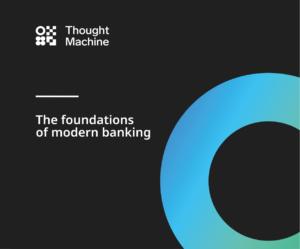Heading into 2023, it is a time of uncertainty for financial institutions offering payments. There is strong economic pressure on companies dealing in finance and technology globally, including in the ASEAN region due to a variety of macroeconomic factors.
It’s worth noting that traditional finance business models, including banking with its monolithic legacy infrastructure, are not equipped for the highly digital economies and consumer behaviour they face in 2023. Technology will be key in shaping the evolution of payments in ASEAN and elsewhere, heading deeper into the 21st century.
That is the opinion of industry leaders across fintech and financial services, ranging from PwC, McKinsey and Deloitte to tech powerhouses like Amazon Web Services and Google Cloud. Here we take a look at some of the top payments trends being predicted to shape finance in ASEAN this year and moving forward, according to the Mambu Partner Predictions report 2023.
Digital banking, SaaS technology push payments innovation across ASEAN
Software-as-a-service (SaaS) applications have seen a marked increase in adoption internationally in the past few years, powering DIY digital transformation efforts across industries and enabling the democratisation of technology. This is especially evident in finance, including in ASEAN where cloud computing and software solutions are playing a big role in innovating legacy payments instruments.
Digital banking has become one of the foremost technology thrusts potentially pushing both payments innovation as well as financial inclusion in ASEAN, according to Conor McNamara, Managing Director, ASEAN for Amazon Web Services. There are already seven digital banks in Indonesia, with more on the way, and four operational in Singapore; Malaysia and the Philippines have awarded licenses to a number of approved players, while Thailand plans to issue three digital banking licenses as early as next year.
“Digital banking licenses in the region create entry points for traditional and challenger financial organisations to access and support previously underserved consumers across ASEAN,” Conor said in the report. “Forward-thinking FS leaders like Mynt in the Philippines are tackling financial inclusion challenges by offering end-to-end digital services to engage consumers, anchored by GCash’s vision “finance for all”, to overcome the challenges faced by 26% of Filipinos, who are unable to physically access a bank.”
The proliferation of data services and cloud-based SaaS will empower payments technology providers in ASEAN to gather market insights and harness them to deliver seamless, personalised payments journeys to customers, the ASEAN MD for AWS believes.
Customers’ preferences will come first
The widespread adoption of payment technology for consumers, spurred on by the COVID-19 pandemic, will have a knock-on effect for business consumers. Customer preferences will become paramount for finance and banking institutions, says Rachel Hunt, VP of Corporate Strategy & Growth at payments technology provider Volante.
“The banks that can launch new real-time services to corporates will benefit from growth and increased market share,” said Rachel. “Volante sees the convergence of the different payment types, and the ability to orchestrate payments towards least cost or fastest routing based on customer preferences, as a key capability to move ahead of the [competition].”
COVID-19 also caused contactless payments at the point-of-sale (POS) to become the dominant mode for transactions in recent years, and Oliver Wyman Digital partner Dan Jones believes the contest for consumer spending will be “between different contactless payment methods, and will be fought across both POS and e-commerce.”
Dan says the prevalence of e-wallets are already more common than physical card payments in ASEAN “and set to dominate POS overall” in 2023. Companies building “a super app ecosystem” will usually include their e-wallet offering to ease onboarding of consumers preferred payment methods, highlighting the likes of WeChat and AliPay in China as well as Grab and GoTo in Southeast Asia.
Dan points out that understanding the depth of payment options on offer, the underlying technology, and the payment preferences of target customers will be a vital differentiator for payments companies who want to remain relevant in ASEAN.
Conor says cloud technology like that from AWS will enable delivering seamless payments experiences across ASEAN, personalised to customer needs in different countries. “In Malaysia, we’re helping Bank Islam build and deploy new services for customers that comply with Islamic/Shariah financial requirements,” he explained. “In Vietnam, we’re working with TNEX to build application functions that promote healthy living, improve personal finance management, and drive financial inclusion.”
Real-time, cross-border payments technology in ASEAN?
“72% of countries now have their own real-time payments (RTP) schemes and in 2023 I expect these RTP rails will extend across borders,” commented Oliver Wyman Digital’s Dan Jones. ASEAN is already home to some of the most well-developed, nationwide real-time payment rails including FAST/PayNow in Singapore, Malaysia’s DuitNow, InstaPay in the Philippines, Thailand’s PromptPay, Indonesia’s BI-FAST, CBM-NET2 in Myanmar, and the ACH system launched by the National Payment Corporation of Vietnam.
What is really being looked forward to regionwide is the establishment of true, real-time cross-border payments – or at least faster, more efficient payments as the technology permits. ASEAN had already been a pioneer of this movement since at least 2006, when the Asian Payment Network (APN) was first mooted with the support of central banks to establish common standards, guidelines and collaborative efforts to establish a regional payments area.
“Real-time cross-border payments today are rare, via bilateral links such as Singapore’s PayNow and each of Thailand, Malaysia, India,and the Philippines. However, multilateral agreements are coming,” Dan added. “ASEAN central bank governors have signed an agreement for a true cross-border system using QR codes.”
Stablecoins “next big trend in digital payments”
Gaurav Arya, Head of Client Partnerships at institutional digital assets platform and infrastructure provider Anchorage Digital, instead claims that his institutional-only client base is increasingly interested in stablecoins – one-to-one backed versions of a legal tender – calling it “the next big trend in digital payments”.
While a number of ASEAN countries are exploring retail and wholesale central bank digital currencies (CBDCs), these would be official digital versions of a legal tender and governed by the central bank of each country. Stablecoins are generally issued on private ledgers and governed by private companies like crypto exchange Binance, and the most widely-used stablecoins are nominally pegged to the US Dollar, such as the $USDT and $USDC stablecoins.
Yet Gaurav insists that the non-crypto public is catching on to the advantages of stablecoins to “enhance payments, with quicker and less expensive settlements than traditional fiat transactions. There is also substantial energy behind real-world stablecoin use cases — from ride hailing and food delivery firms, to payroll and remittance payments.”
While real-world stablecoin use cases have yet to be experienced at scale in Southeast Asia, Gaurav notes that we can expect to hear of more partnerships between crypto companies and traditional financial institutions in 2023 that will utilise stablecoins to drive digital payments innovation.
Gaurav concluded, “At the end of the day, stablecoins unlock the instant availability of funds, all while bolstering and upgrading fiat currency to meet the demands of the digital age.”
Featured image credit: edited from Freepik here and here
- SEO Powered Content & PR Distribution. Get Amplified Today.
- Platoblockchain. Web3 Metaverse Intelligence. Knowledge Amplified. Access Here.
- Source: https://fintechnews.sg/68975/payments/insiders-reveals-top-asean-payments-predictions-in-2023/









